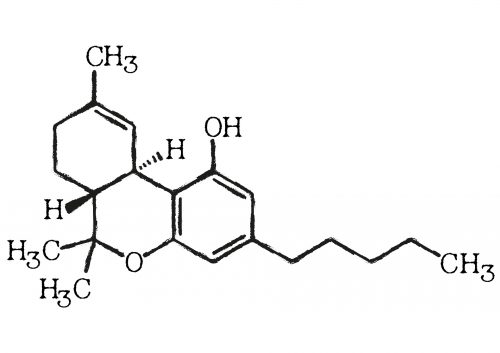In my last post, I briefly reviewed the research evidence of performance deficits from the acute effects of alcohol. Now, I contrast our knowledge of alcohol with similar types of studies for cannabis. For alcohol, the breathalyzer test is an accurate measure of a person’s BAC and alcohol is eliminated from the body at a fairly constant rate. As well, laboratory studies, observational studies, and validity studies all show that BAC levels are closely related to performance deficits, and that a BAC level of 0.08% can be used to define severe impairment.
In this post, I provide my interpretation of the safety benefits of the federal government’s recommendation for tetrahydrocannabinol (THC) cut-offs in blood. Their proposed legislation would permit roadside oral fluid tests when law enforcement officers reasonably suspect that a driver has taken cannabis or other drugs. For positive readings, officers could demand a drug evaluation or a blood sample. A blood test reading of 2 to 5 ng/ml THC in whole blood would be subject to a summary (i.e. less serious) criminal conviction and a penalty of a fine up to $1,000. A reading over 5 ng/ml could be subject to an indictable (i.e. more serious) offence and a mandatory fine of $1,000 for a first offence and higher penalties for repeat offenders.
What biological specimens are valid?
As in the case of alcohol, blood is the most accurate sample for detection of concentration levels of THC that may be associated with impairment for cannabis. However, unlike alcohol, no other type of biological sample (oral fluid, urine or breath tests) is close enough to blood readings to be considered a suitable substitute. As mentioned, the proposed new laws would allow officers to do an oral fluid test only to see if cannabis is present; they then have to do further testing or evaluation to prove impairment.
As well, blood tests must be used to detect THC, one of over several hundred compounds in cannabis—and to be accurate, offsite laboratories are needed that use chromatography and spectrometry chemical analysis. Drawing blood requires specialized training and is invasive compared with breathalyzer tests for alcohol.
Blood can also be analyzed in different mediums, including serum or plasma, but the proposed legislation call for samples of whole blood. This is an important point because concentration levels differ greatly depending on the type of medium. Although, serum and plasma generally contains higher drug concentrations than whole blood, whole blood to plasma/serum ratios vary considerably between individuals. Due to this high degree of error, a standard of whole blood should be adopted.
So, blood, and whole blood at that, is really the only viable option when it comes to measuring cannabis impairment. But are the limits the legislation is proposing reasonable—and do we have the ability to accurately measure them in the first place? Let’s take a look at some of the evidence around THC levels and impairment, using the same headings as my earlier post on BAC and alcohol.
At what rate is THC eliminated from the body?
After smoking cannabis, THC levels rise very rapidly in blood and peak within three to 10 minutes often at levels around 70 to 100 ng/ml in whole blood, depending on the person and dose. Around an hour after smoking, THC levels decline by about 90% and very gradually decrease afterwards. THC is not eliminated from the body at a constant rate, similar to alcohol. There is a high degree of variability between people in their THC blood concentration levels at different time points, given the same amounts used. As well, daily users will have much longer detection periods than occasional users. In one 2009 study, for example, a daily user had a THC blood concentration level of 3.7 ng/ml six days after abstinence. A major difference between alcohol and THC is that alcohol is water soluble and eliminated at a fairly quick and constant rate, whereas THC is fat soluble and can remain in the body for very long periods of time.
Therefore, by the time you get a suspected impaired driver to a police station or somewhere else where blood testing is available, it may be too late to determine how impaired they were when they were first pulled over—and that would vary widely from person to person.
What is the relationship between THC and human performance?
Laboratory studies – Experimental studies have shown that after smoking cannabis, people are usually under the influence for about two hours, with possible lingering effects up to four hours. The high is longer when cannabis is consumed orally. When high, meaningful performance deficits occur related to crash risk.
A recent article concluded cannabis produces cognitive deficits, but only a few studies show motor deficits similar to those found for alcohol; in fact, some studies have concluded that deficits in complex cognitive tasks are minimal. However, the general scientific consensus is that the acute use of cannabis causes performance deficits and that driving while high should be prohibited. The important question is how to determine whether an individual has driven while high on cannabis.
In order to understand the relationship between THC blood tests and performance deficits, direct measures of both performance deficits and THC blood concentrations are needed. Unfortunately, unlike the voluminous literature of performance deficits at different BAC levels, few studies on performance deficits at different blood THC levels exist. Rather, conclusions in some major review studies on possible per se limits for THC blood levels (such as this one from 2007 and this one from 2013) are largely based on studies where blood tests of subjects were never taken. Without direct estimates between performance deficits and actual THC levels, we cannot reasonably draw conclusions regarding the nature of the relationship between them.
One exception is this well-designed experimental study from Hartman et al, where performance from alcohol was compared with blood THC levels in cannabis. The authors concluded that blood THC concentrations of 8.2 ng/mL and 13.1 ng/mL correspond to deficits from alcohol of 0.05% and 0.08% respectively. This is much higher than the proposed limits of 2 to 5 ng/ml THC in whole blood for a summary offence and over 5 ng/ml for an indictable offence. The findings from this study indicate that the Federal proposal is adopting measures for cannabis that are much more stringent than for alcohol.
Observational studies – In terms of observational crash risk/culpability studies, those with positive blood THC levels are about twice as likely to be in crashes or culpable for crashes than those negative, based on a good review by Asbridge et al. A limitation of most of these studies; however, is that the risk ratios at different THC levels, such as below 5 ng/ml, were not reported. In the above-mentioned 2007 review, authors conducted a re-analysis of data from a 2004 epidemiological culpability study with THC blood tests in fatally injured drivers, which is a high-quality study. They concluded that a THC whole blood level of 6 to 8 ng/ml corresponds to a BAC of about 0.05% alcohol. Drivers with THC levels from 0 to 5 ng/ml had an odds ratio of 0.7, indicating no increased risk of being culpable for a fatal crash.
Validity studies –I have found no validity studies between performance deficits and THC blood tests.
Evaluation studies – There are some evaluation studies of urine testing in the workplace, which have not demonstrated drug testing to be an effective intervention (I explore this more in my book). No evaluation studies were found specifically on blood testing and blood testing for cannabis.
Conclusion and comparison to breathalyzer tests
Overall, major differences exist when comparing the scientific benefits of alcohol testing versus cannabis testing. First, the testing devices of the breathalyzer for alcohol and blood testing for cannabis differ radically. Unlike the breathalyzer, drawing blood requires specialized training, is invasive, and the blood needs to be analysed by offsite laboratories. Alcohol is eliminated from the body at a constant rate, whereas cannabis is eliminated unevenly over time (rapidly shortly after using and extremely slowly thereafter). Therefore, it is critical to obtain samples of blood for cannabis in a timely manner, but for alcohol there is more leeway.
Evidence from both laboratory and observational studies suggest whole blood levels from 0 to 5 ng/ml do not translate into meaningful performance deficits corresponding to a BAC level of at least 0.05% alcohol. Few laboratory studies exist that compare performance deficits with THC blood concentration levels. Observational studies do indicate higher THC levels in drivers is dangerous, but not enough research has been conducted to recommend a cut-off corresponding to BAC levels of 0.05% or 0.08%. No validity studies or evaluation studies were found on blood tests cut-offs and performance.
In other words, we have yet to determine what level of THC in whole blood makes someone as impaired as they would be if their BAC was 0.05% or 0.08%. What little evidence we have suggests the proposed thresholds for blood THC concentrations are extremely low. And even if we knew what the proper levels were, we lack ways of drawing and accurately measuring THC blood in a timely manner.
Read our Cannabis and Driving blog series:
Part 1: Proposed federal legislation on cannabis and alcohol impaired driving
Part 2: The safety benefits of alcohol breath-testing: a research summary
Part 4: The myth and origins of 24-hour performance deficits from cannabis
 Scott Macdonald is the Assistant Director of research at the Canadian Institute for Substance Use Research and a professor in the School of Health Information Science at the University of Victoria. He has been an expert witness in several cases related to drug testing in the workplace. Material from this series is taken from his book, Cannabis Crashes: Myths and Truths, Lulu Press.
Scott Macdonald is the Assistant Director of research at the Canadian Institute for Substance Use Research and a professor in the School of Health Information Science at the University of Victoria. He has been an expert witness in several cases related to drug testing in the workplace. Material from this series is taken from his book, Cannabis Crashes: Myths and Truths, Lulu Press.
**Please note that the material presented here does not necessarily imply endorsement or agreement by individuals at the Canadian Institute for Substance Use Research.


